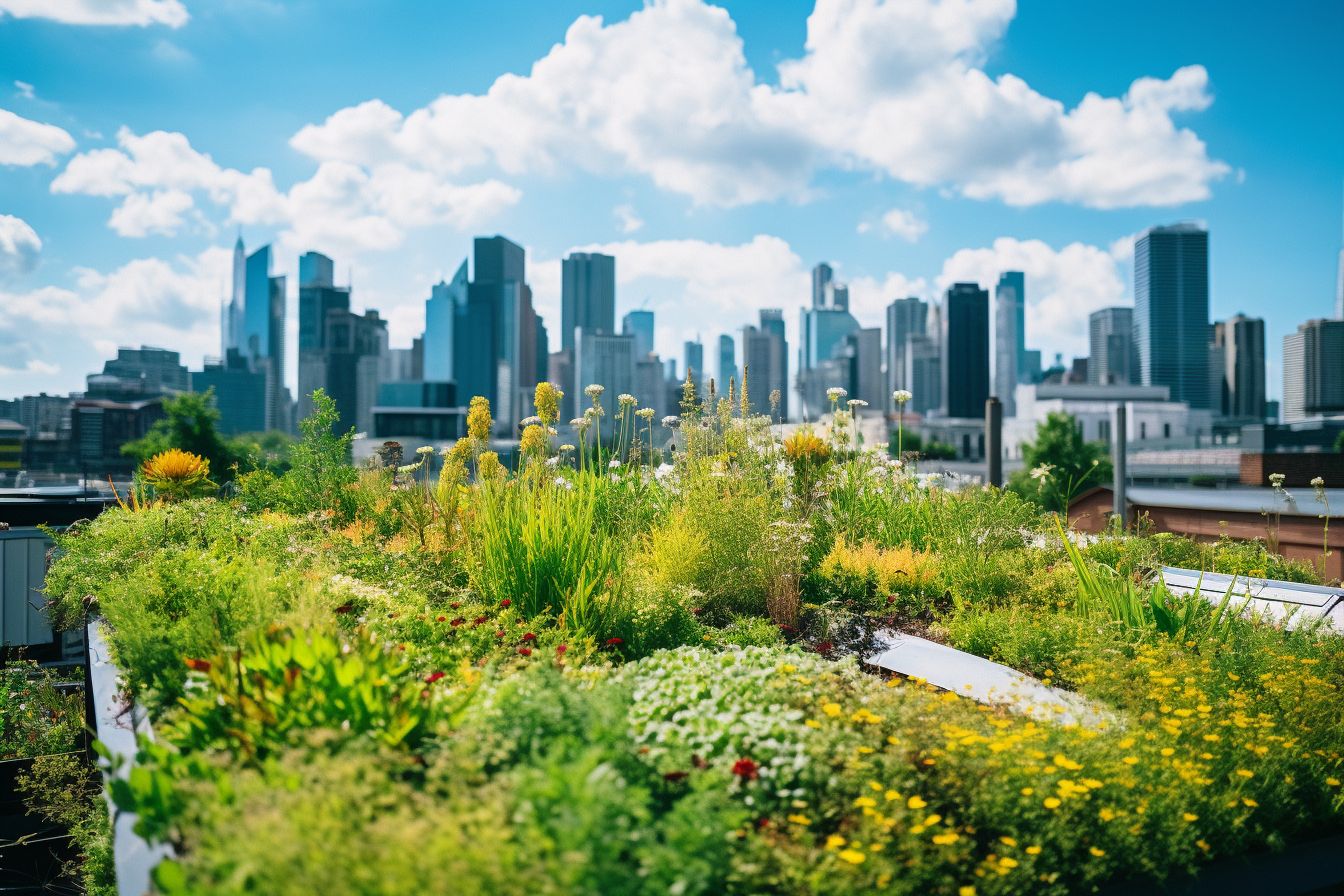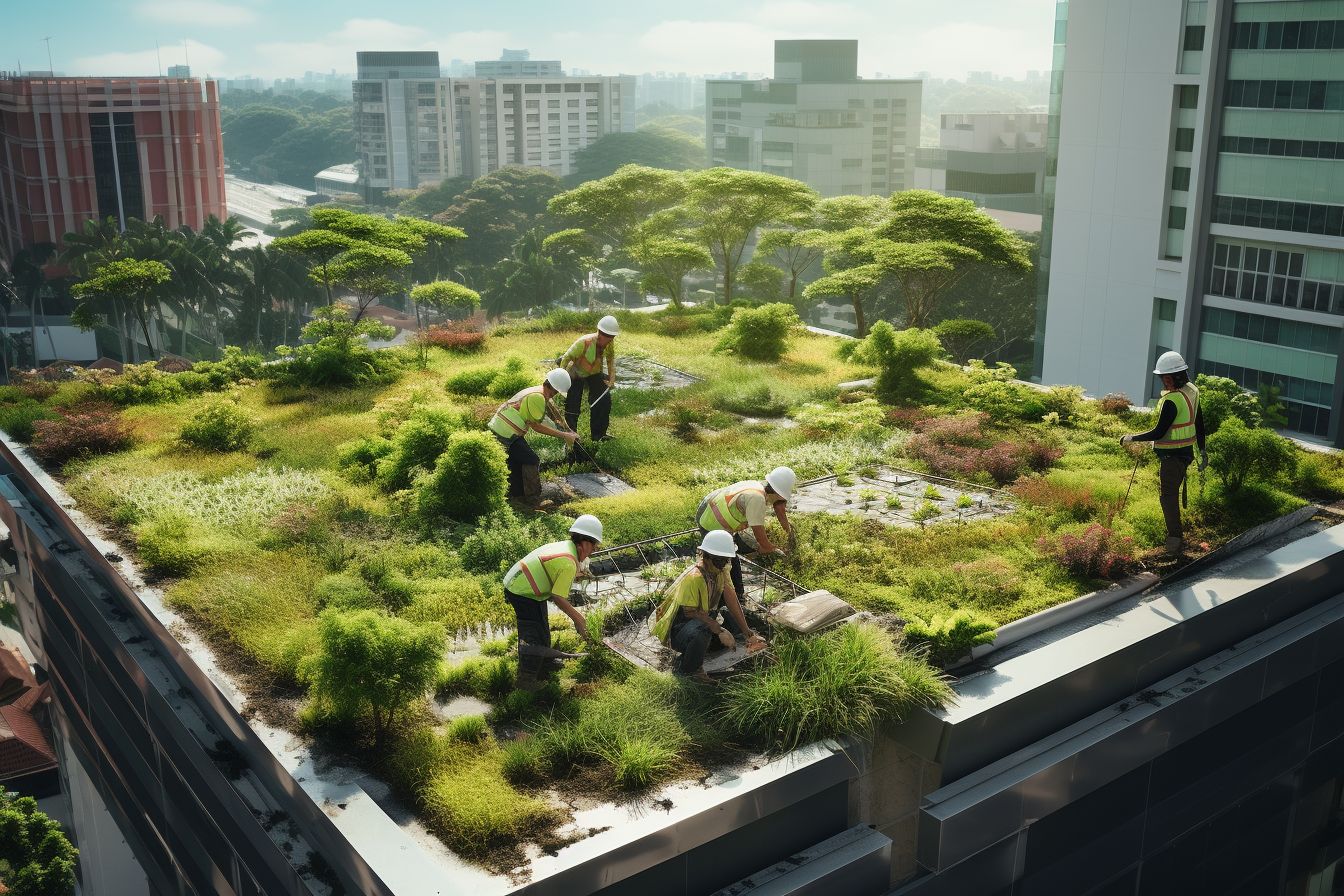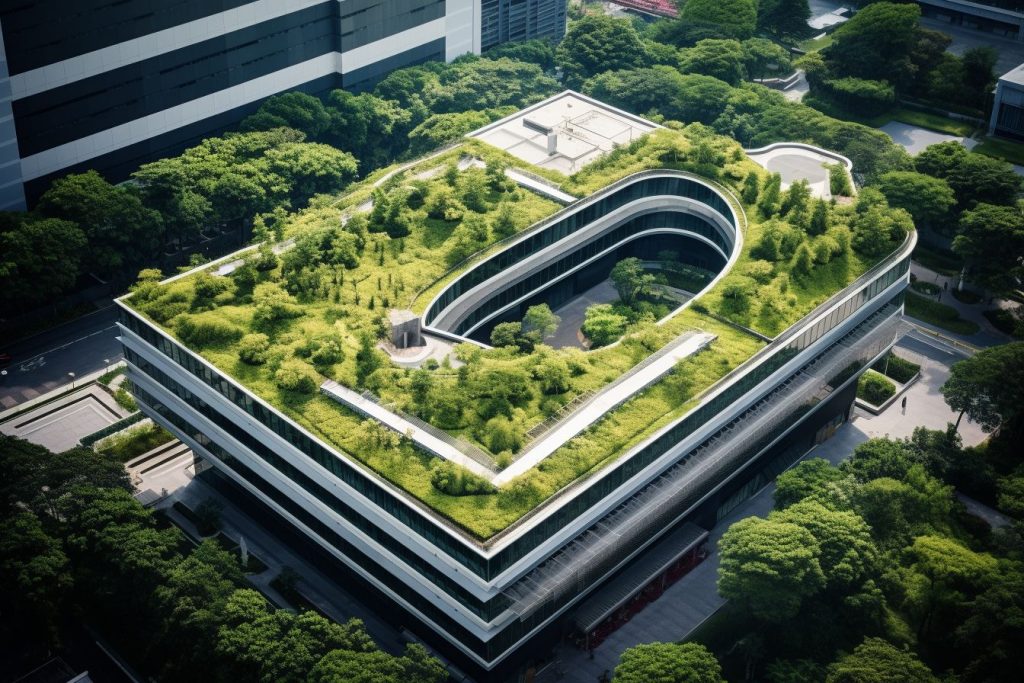Are you considering a unique way to make your home or office more sustainable? A living roof, also known as a green roof, might be the solution. This article will explore what a living roof is, its benefits and how it’s constructed.
Intrigued? Let’s delve into the world of living roofs together.
Key Takeaways
- A living roof, also known as a green roof, is covered with vegetation and involves in-depth planning and installation processes.
- Living roofs offer numerous benefits, including reducing strain on drainage systems, purifying the air by trapping dust particles, combating urban heat islands, decreasing energy costs through natural insulation, increasing biodiversity in urban areas, improving overall health benefits for residents, and providing fire retardation and noise reduction.
- Constructing a living roof involves steps such as applying a waterproofing membrane to protect the roof from water damage, installing a root barrier to prevent plant roots from damaging the underlying layers, adding an insulation layer for temperature control, using a drainage layer to guide excess water away from the root zone, placing a filter fabric over the drainage layer to allow water through but keep soil particles in place, and spreading suitable plants onto the growing medium.
Definition and Explanation of a Living Roof

A living roof is essentially a roof covered with vegetation. It’s not simply about throwing some plants at your house and calling it a day, though. There’s more to these green roofs than meets the eye.
A growing medium allows the vegetation to grow healthily. Waterproofing prevents any damage to the infrastructure from moisture or leaks.
Green roofs don’t stop at just being green; they involve in-depth planning and installation processes. They need a root-repellent system that prevents invasive roots from damaging your property and allows friendly flora to flourish easily.
A drainage system becomes an integral part of their design to deal efficiently with rainwater.
Living roofs are seen as investments in urban ecology because they create habitats on your rooftops! They play their part in improving air quality by acting as natural filters. They can reduce energy consumption through insulation properties, keeping buildings cooler in the summer and warmer during winter.
Notable examples of living roofs include the 2.5-acre one atop the California Academy of Sciences, which contributes significantly towards local wildlife preservation efforts while promoting sustainability goals for the organisation.
These roofs do far more than just reduce costs or beautify our cities; they provide numerous environmental benefits like filtering stormwater runoff, enhancing biodiversity, and mitigating the urban heat island effect – proving that we can live harmoniously within nature even amidst concrete jungles.
Benefits of a Living Roof
Living roofs offer many valuable benefits that enhance the environment and quality of life.
- Acting as a rainwater buffer, these roofs absorb excess rainwater, reducing the strain on drainage systems and preventing water overflow.
- Green rooftops purify the air by trapping dust particles and consuming carbon dioxide, reducing air pollution.
- They help to decrease the surrounding temperature, combatting urban heat islands by providing shade and removing heat from the air.
- Indoor temperature regulation is another plus point; these roofs absorb rather than attract heat, resulting in natural insulation and lower energy costs.
- Ecoroofs can increase biodiversity in urban areas by providing habitat for various insects, birds, and even small mammals.
- The sustainability aspect improves overall health benefits for residents, providing physical and mental comfort.
- Finally, with a vegetated roof, you see improved durability of roofing membranes, reducing maintenance costs in the long run.
- Other benefits include fire retardation, noise reduction and marketing advantages due to an increased property’s aesthetic value.
How Living Roofs are Constructed

Building a living roof requires careful planning and the use of various materials. Below are the steps involved in its construction:
- First, a waterproofing membrane is applied to the roof’s surface to protect it from water damage.
- Next comes the addition of a protection board, which serves as an extra layer covering the normal roof, crucial for preserving the structure underneath.
- a root barrier prevents plant roots from penetrating and damaging the underlying roof layers.
- An insulation layer follows next, providing temperature control for building occupants and plants.
- a drainage layer helps guide excess water away from the root zone to avoid oversaturation.
- A filter fabric is laid over the drainage layer to allow water through but keep soil particles in place.
- Finally, a growing medium – topsoil mixed with compost or other organic matter – is spread across this base onto which plants can be situated.
- Once ready, plants suitable for local climates and can tolerate rooftop conditions are planted.
Conclusion
Living roofs bring a unique blend of nature and the urban environment together, creating beauty in unexpected places. They offer environmental benefits while enhancing the aesthetic appeal of buildings.
Often seen as an extension of traditional gardening, these green spaces provide a calming retreat amidst city life. They are ecologically friendly and contribute to sustainability by saving energy and reducing noise pollution.
FAQs
1. What is a living roof?
A living roof, also known as a green roof, is a roofing system that incorporates vegetation and plants to create an eco-friendly and sustainable environment on top of a building.
2. How does a living roof work?
A living roof creates layers that include waterproofing, drainage, soil, and vegetation. The plants on the roof absorb rainwater, provide insulation, filter air pollutants, and reduce heat absorption from the sun.
3. What are the benefits of having a living roof?
A living roof can provide several benefits, including improved energy efficiency in buildings, reduced stormwater runoff, increased biodiversity in urban areas, improved air quality, and extended roofing system lifespan.
4. Can any building have a living roof?
While not all buildings are suitable for a living roof due to structural capacity or access limitations for maintenance purposes, many structures can accommodate this green roofing system, including residential homes, commercial buildings, and even industrial facilities.
5. How much maintenance does a living roof require?
Living roofs generally require regular maintenance, such as watering during dry periods (if there isn’t sufficient rainfall), inspecting for any damage or leakage, weeding to prevent invasive plant species growth, and occasionally replacing dead or damaged vegetation patches. However, the maintenance needed will depend on factors like climate conditions and plant selection.

